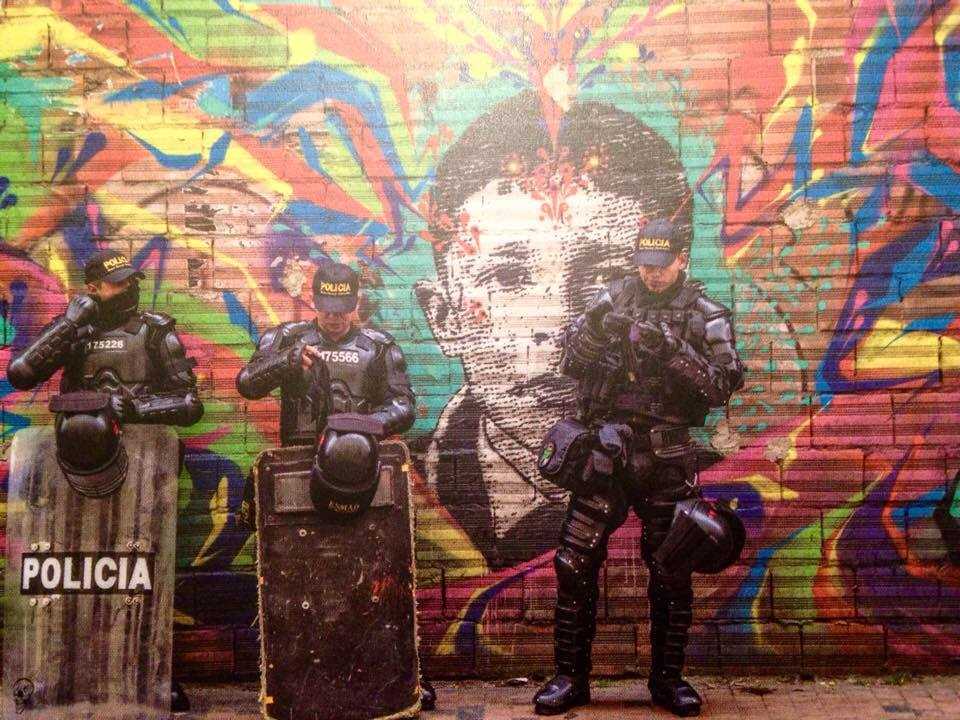
When walking through the streets of Bogota, Colombia, it is impossible to ignore the vibrant and captivating street art that adorns the city’s walls. From dilapidated buildings to bustling marketplaces, the streets of Bogota have become an open-air gallery, showcasing the creativity and talent of local and international artists.
What began as a form of expression and rebellion against the political and social injustices in the city has evolved into a powerful movement that explores various themes, from cultural identity to environmental issues. Bogota street art not only beautifies the city but also serves as a powerful medium for social commentary and cultural preservation.
The streets of Bogota serve as a canvas for artists from all walks of life. Local artists, inspired by their surroundings and the colorful history of their city, create intricate murals that tell stories of resilience, hope, and struggle. International artists are also drawn to the city’s vibrant art scene, often collaborating with local artists to create breathtaking works of art that combine different styles and perspectives.
One of the most striking aspects of Bogota street art is the use of vibrant colors and bold imagery. Every mural tells a unique story, representing the thoughts, feelings, and experiences of the artist. From abstract shapes and patterns to realistic portraits and landscapes, the diversity of styles and techniques used by Bogota street artists is truly impressive.
The Impact of Bogota Street Art
Bogota street art has not only transformed the city’s landscape but also has had a profound impact on its people. The art serves as a source of inspiration and pride for the local community, as it reflects their heritage and cultural identity. The colorful murals have not only brought neglected neighborhoods to life but have also attracted tourists from around the world, contributing to the city’s growing reputation as an art destination.
Furthermore, Bogota street art has sparked important conversations about social and political issues. The murals often depict the struggles faced by marginalized communities, exposing the realities of poverty, inequality, and discrimination. By bringing these issues to the forefront, the art acts as a catalyst for change, encouraging dialogue, and raising awareness.
Overall, Bogota street art is not just about beautiful paintings on walls. It is an expression of the city’s soul and a reflection of its people’s hopes and dreams. Through colorful and thought-provoking images, Bogota street art invites us to explore urban culture and challenges us to see the city in a new light.
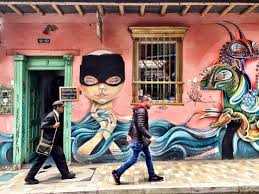
Street art has experienced a remarkable rise in popularity over the past few decades. What was once considered vandalism and a public nuisance is now celebrated as a vibrant and dynamic form of artistic expression. For many cities around the world, street art has become a defining feature of their urban landscapes, transforming plain walls into colorful and thought-provoking canvases.
The roots of street art can be traced back to the graffiti movements of the 1960s and 1970s in cities like New York and Philadelphia. These early street artists used spray paint and markers to leave their mark on buildings and subway trains, often as a form of protest or to simply gain recognition among their peers.
Since then, street art has evolved and diversified, encompassing a wide range of styles and techniques. Some street artists prefer to work with stencils, allowing them to quickly create detailed designs, while others prefer freehand painting, using brushes to bring their visions to life. Street art can also take the form of wheatpaste posters, stickers, and even three-dimensional installations.
One of the key factors in the rise of street art has been the advent of social media and the internet. Artists can now easily share their work with a global audience, gaining recognition and building a following without relying on traditional galleries or art institutions. This has allowed street art to transcend geographical boundaries and reach people from all walks of life.
Another contributing factor to the rise of street art is the growing acceptance and appreciation of urban culture. Street art has become an integral part of the cultural fabric of many cities, with local governments and businesses embracing it as a way to revitalize neighborhoods, attract tourism, and foster a sense of community.
Today, street art continues to grow and evolve, with artists pushing the boundaries of creativity and innovation. It has become a powerful form of storytelling, addressing social and political issues, and creating conversations in public spaces. The rise of street art has transformed the way we perceive and experience cities, adding color, vibrancy, and unexpected surprises around every corner.
Artistic Expressions on the Streets
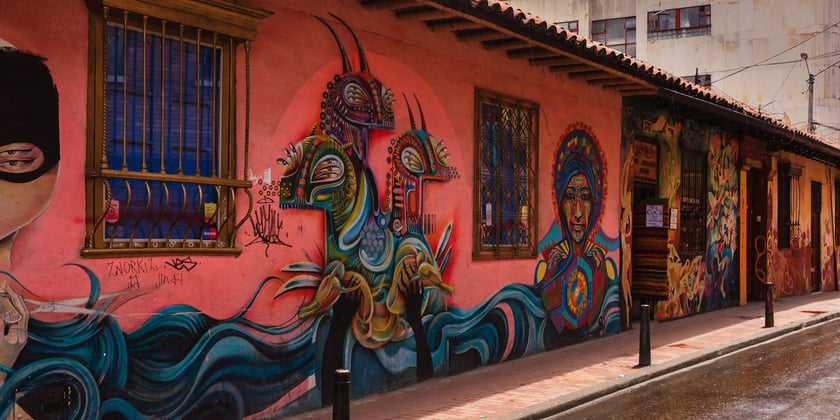
Bogota is a city filled with vibrant artistic expressions that can be found on the streets. From colorful murals to intricate graffiti, the urban walls are transformed into a gallery of creativity and self-expression.
Street art has become a powerful medium for artists to communicate their thoughts, ideas, and emotions. It serves as a platform for cultural and social commentary, allowing artists to engage with the public on a visual and emotional level.
Walking through the streets of Bogota, you will be greeted by an explosion of colors and images that tell stories of the city’s rich history and diverse cultural heritage. The art reflects the spirit and identity of Bogota, capturing the essence of its people and their struggles, dreams, and aspirations.
One of the most fascinating aspects of street art in Bogota is its ability to transform everyday locations into captivating works of art. Artists often choose unexpected and unconventional canvases, such as abandoned buildings, walls, and bridges, to create their masterpieces. These seemingly ordinary spaces are transformed into vivid and thought-provoking visual narratives that bring life and vitality to the city.
Moreover, street art in Bogota is not confined to a single style or technique. You can find a myriad of artistic expressions, ranging from realistic portraits to abstract designs, from political statements to whimsical illustrations. Each piece is a unique reflection of the artist’s style, vision, and perspective.
Artistic expressions on the streets of Bogota serve as a reminder of the power of art to inspire, provoke, and bring people together. They invite us to engage with our surroundings, to question the status quo, and to celebrate the beauty and creativity that exist in our everyday lives.
Exploring the Meaning Behind the Colors
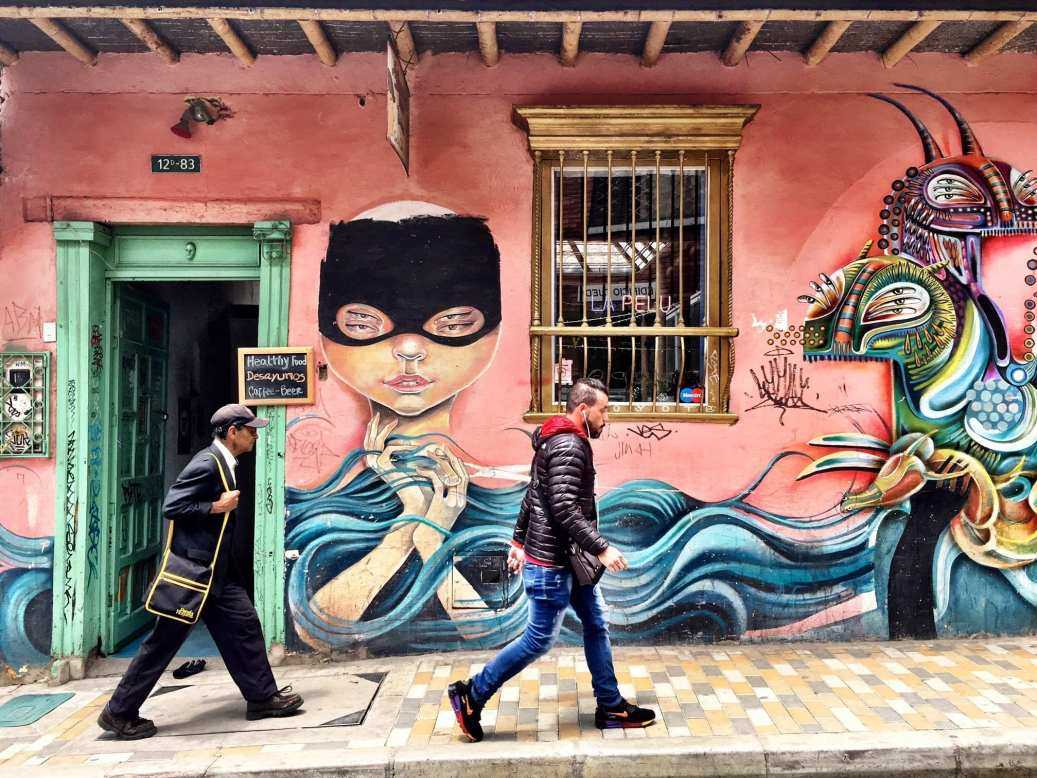
When exploring street art in Bogota, one cannot help but be fascinated by the vibrant and diverse colors used in the paintings. Each color carries its own meaning, symbolizing different emotions and concepts. Let’s take a closer look at the meanings behind some of the most commonly used colors in Bogota street art.
Red: Passion and Revolution
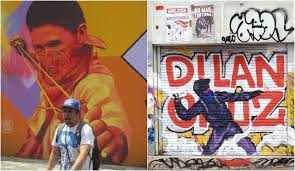
Red is a color that often represents passion, energy, and love. In the context of Bogota street art, red can also symbolize the revolutionary spirit that has shaped Colombia’s history. It is a bold and powerful color that grabs attention and demands to be heard.
Blue: Tranquility and Hope
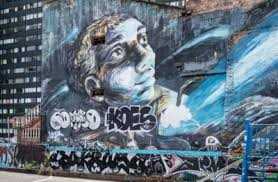
Blue is a calming color associated with tranquility and peace. In Bogota street art, blue can often be seen as a symbol of hope, reminding viewers of the potential for positive change and a better future. It represents unity and a desire for harmony in a city that has faced its share of challenges.
Yellow: Joy and Optimism
Yellow is a bright and cheerful color that radiates positivity and happiness. When used in Bogota street art, yellow can symbolize joy and optimism, reflecting the resilience and optimism of the Colombian people. It adds a playful and energetic element to the cityscape, uplifting both residents and visitors alike.
Green: Growth and Sustainability
Green is the color of nature and often symbolizes growth, renewal, and sustainability. In the context of Bogota street art, green can be seen as a reminder of the importance of preserving the environment and embracing sustainable practices. It serves as a call to action to protect Colombia’s rich natural resources and promote a greener future.
By understanding the meanings behind the colors used in Bogota street art, we can gain a deeper appreciation for the messages and emotions expressed by the artists. These vibrant and meaningful paintings not only beautify the city but also serve as a powerful medium for social commentary and cultural expression.
Promoting Social and Political Messages
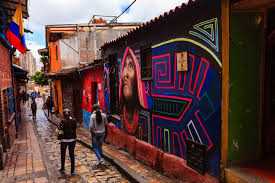
Bogota’s street art scene serves as a platform for artists to express their perspectives on social and political issues. Through colorful and thought-provoking murals, they ignite conversations and challenge the status quo.
Artists in Bogota use their work to shed light on a wide range of social and political issues. Whether it’s advocating for human rights, critiquing government policies, or highlighting the struggles of marginalized communities, these murals serve as a powerful medium for activism.
One notable example is the mural titled “Equality,” which depicts two people of different races holding hands. This artwork symbolizes the importance of racial harmony in a diverse society and challenges racial inequality. The vibrant colors and striking imagery grab the attention of passersby, inviting them to contemplate the message behind the mural.
Another powerful mural is “Voices of the Disappeared,” which addresses the issue of enforced disappearances in Colombia. The mural features portraits of individuals who have gone missing, accompanied by their names and the words “Never Forgotten.” This artwork sparks conversations about the human rights violations that have occurred in the country and urges people to demand justice for the victims.
Beyond social issues, street art in Bogota also tackles political topics. Artists often criticize government policies, corruption, and the abuse of power. One mural titled “Corrupt Land” portrays politicians as vultures feeding off the land, emphasizing the damaging effects of political corruption on society.
The Role of Street Art in Social Change
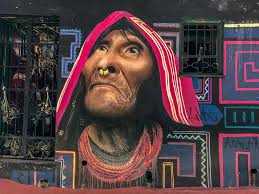
Street art in Bogota plays a crucial role in bringing attention to social and political issues that often go unnoticed or unaddressed. The accessible nature of these artworks, located in public spaces, ensures that a wide audience can engage with the messages portrayed.
Street art also empowers marginalized communities by giving them a voice and a platform to express their experiences and demands. It creates a sense of community and solidarity among those who are impacted by the issues depicted in the murals.
The transformative power of street art extends beyond its physical presence. It inspires dialogue, prompts reflection, and motivates individuals to take action. These murals have the potential to change perspectives, challenge societal norms, and ultimately contribute to the social change and progress of Bogota.
Unveiling Bogota’s Street Art Hotspots

As you stroll through the vibrant streets of Bogota, Colombia, it’s hard to miss the colorful and captivating street art that adorns the city’s walls. Bogota has become renowned for its thriving street art scene, attracting both local and international artists who use their talent to convey powerful messages and bring life to the urban landscape.
La Candelaria
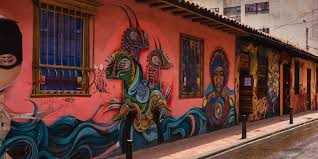
One of the most iconic neighborhoods to explore Bogota’s street art is La Candelaria. This historic district is known for its charming colonial architecture and narrow, winding streets that serve as a canvas for artists. Every corner you turn, you’ll encounter a new mural or graffiti piece, each with its own unique style and story to tell.
Chorro de Quevedo
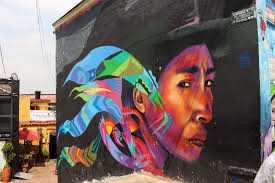
Located in the heart of La Candelaria, Chorro de Quevedo is a small square that holds great cultural significance. It’s believed to be the birthplace of Bogota, making it a must-visit spot for history buffs and art enthusiasts alike. The walls surrounding the square are adorned with vibrant street art, telling tales of the neighborhood’s rich past and present.
Whether you’re a seasoned art lover or someone who simply appreciates the beauty of street art, exploring Bogota’s hotspots is a must-do when visiting the city. Take the time to wander through its vibrant neighborhoods, and you’ll discover a whole new world of creativity and expression that is sure to leave a lasting impression.
Preserving Street Art: Challenges and Initiatives
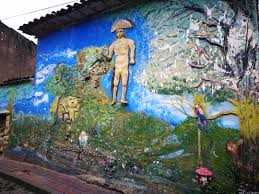
Street art plays an integral role in the urban culture of Bogota, but its ephemeral nature poses challenges to its preservation. The transient nature of street art means that it can easily be painted over, removed, or destroyed. This poses a threat to the artists who dedicate their time and creativity to beautifying the city.
One of the main challenges in preserving street art is the perception that it is temporary and disposable. Many people view street art as vandalism rather than a legitimate form of artistic expression. This mindset has led to the removal of countless murals and pieces of street art throughout Bogota. Additionally, the materials used in street art, such as spray paint, can degrade over time, making it even more difficult to protect and preserve these works.
Despite these challenges, there are several initiatives working to preserve street art in Bogota. One such initiative is the creation of street art tours and maps. These tours highlight the importance of street art in the city and showcase the works of local artists. By educating the public about the value of street art, these tours aim to foster a greater appreciation and understanding of the art form.
Another initiative is the establishment of designated street art areas. These areas provide a space for artists to create and display their work without the fear of it being destroyed. By designating these areas as legal street art zones, the city is able to protect and preserve the art while also allowing for new creations and expressions.
In addition to tours and designated areas, some organizations are working to document and archive street art in Bogota. By photographing and cataloging the murals and pieces, these organizations are able to create a digital record that can be accessed and appreciated by future generations. This documentation helps to ensure that even if the physical art is lost or destroyed, its legacy will live on.
The Impact of Street Art on Bogota’s Cultural Landscape
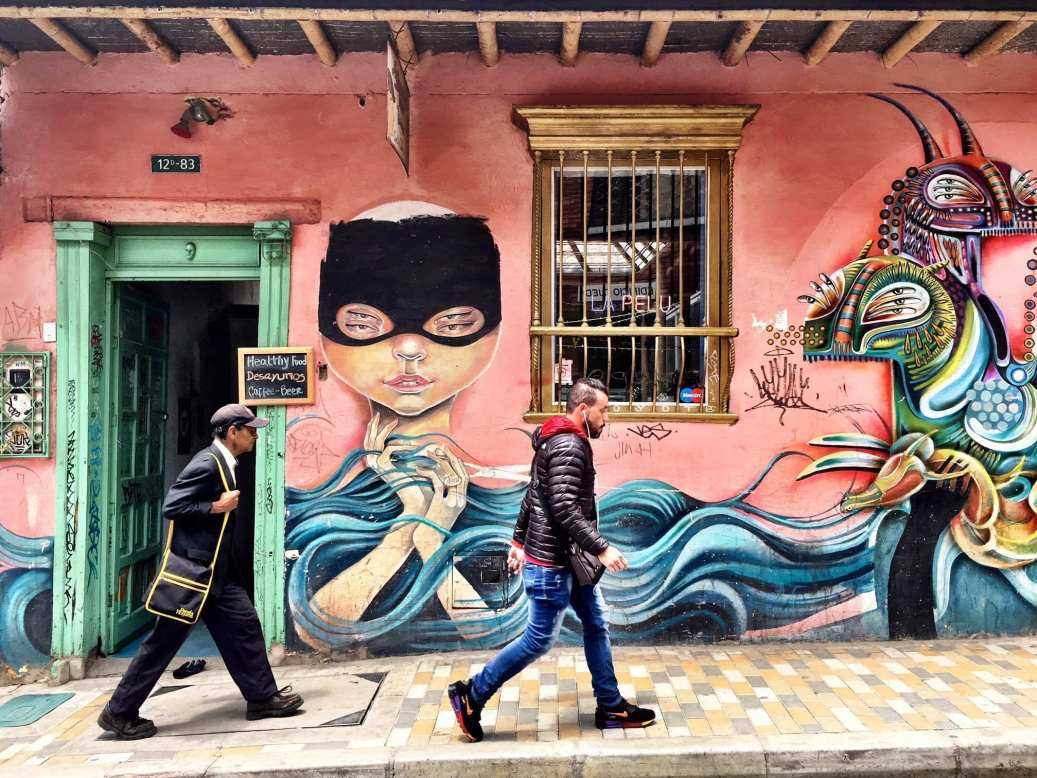
Street art has had a profound impact on Bogota’s cultural landscape, transforming the city into a vibrant and colorful gallery of expression. The city has become a destination for both local and international artists, who are drawn to its rich history and dynamic urban environment.
One of the key ways in which street art has influenced Bogota’s cultural landscape is by providing a platform for marginalized voices to be heard. Many of the city’s street artists come from disadvantaged backgrounds and use their art as a form of social commentary. Through their murals and graffiti, they tackle issues such as inequality, poverty, and human rights, sparking important conversations and challenging the status quo.
Additionally, street art has become a tool for reclaiming and revitalizing neglected spaces in Bogota. Abandoned buildings, public walls, and even empty lots have been transformed into vibrant canvases, bringing life and energy to areas that were previously forgotten. This has not only beautified the city but also created a sense of community and pride among its residents.
Furthermore, the presence of street art in Bogota has attracted tourists and art enthusiasts from around the world. The city has become known for its graffiti tours and street art festivals, which celebrate the creativity and talent of local artists. These events have not only boosted tourism but also provided opportunities for artists to showcase their work and make a living from their passion.

I am a mural enthusiast and a fervent admirer of street art. Rather than creating murals myself, I am passionate about collecting them. My love for street art knows no bounds. I am dedicated to curating and cherishing these artworks that grace the streets. My collection stands as a testament to my profound appreciation for this form of artistic expression.
read about me



